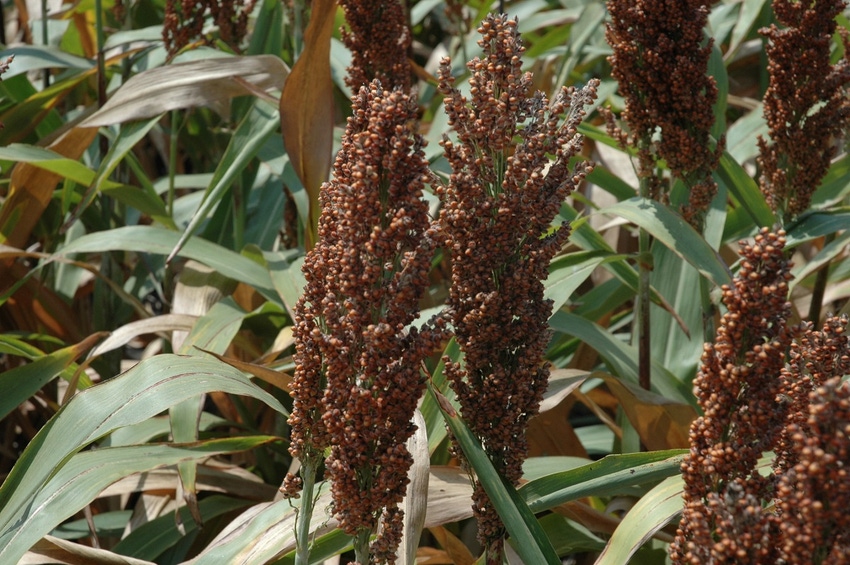
Sugarcane aphid populations increased dramatically in South Texas from the last few days of April into the first days of May, and a Texas AgriLife Extension integrated pest management specialist is advising producers to monitor fields closely, every three to four days.
“I’ve received many reports of sorghum fields being treated by air and by ground for sugarcane aphids this week,” says IMP specialist Danielle Ortiz.
For the latest on southwest agriculture, please check out Southwest Farm Press Daily and receive the latest news right to your inbox.
“Commercial sorghum fields along the river (Military HWY) and along the coast have some of the highest populations, more than 1,000 sugarcane aphids per leaf,” Ortiz says. Numbers are also high into the mid-Rio Grande Valley area with many of those fields requiring treatment.
“Further west, towards the McCook and Hargil areas, we are seeing many winged sugarcane aphid adults migrating into sorghum fields and populating them so fast they will probably need to be treated by the end of the week.”
Ortiz says beneficial insects are feeding on sugarcane aphids but will not be able to keep up with rapidly increasing populations. “Treat when necessary.”
With the recent Section 18 emergency exemption for Transform insecticide, sorghum producers have two effective products available to control the sugarcane aphids. Sivanto also is labeled for treating sugarcane aphids in sorghum.
“Sivanto and Transform both offer good control of the sugarcane aphid. Transform received a Section 18 for use on sorghum that became effective on April 8 2016 and expires on April 8 2017.”
She noted specific restrictions for Transform use, including: When making a Transform application you have to have a copy of the label in hand; The Section 18 label for Transform this year stipulates that the product Transform cannot be applied less 3 days pre-bloom until after seed set.”
Sivanto also has new directions with a 24c label reducing its PHI from 21 days to 14 days (same as Transform).
“For those who want data on how well these products work to control sugarcane aphids please see the efficacy graphs in the SCA presentations posted to: http://southtexas.tamu.edu/programs-and-services/ipm/.”
Water volume is a critical factor in spray efficacy, Ortiz adds. “I recommend that if you are spraying by plane try to put out 5 gallons of water per acre, and if by ground at least 12 to 15 gallons of water per acre in order to get good coverage on these heavy sugarcane aphid populations.”
Ortiz says Rio Grande Valley grain sorghum is maturing fast with most in flowering or soft dough stage.
In addition to sugarcane aphid, she reports some “light headworm activity, so we will want to be monitoring that pest closely the next few weeks. Sorghum midge has barely started to appear in field edges, but producers with late planted sorghum will want to keep a close eye on sorghum midge until seed matures.”
About the Author(s)
You May Also Like






